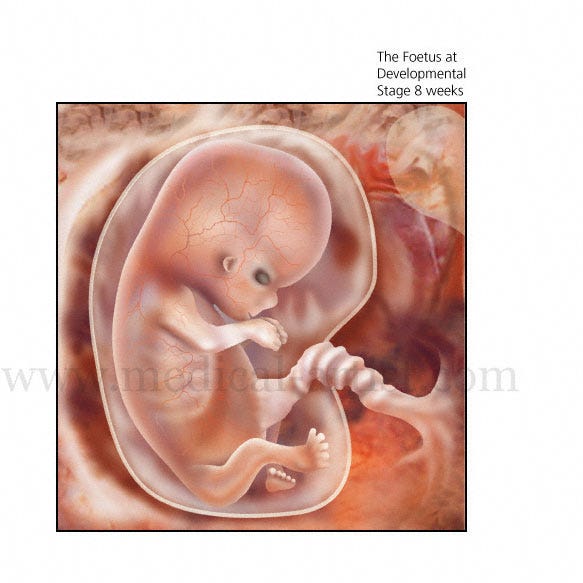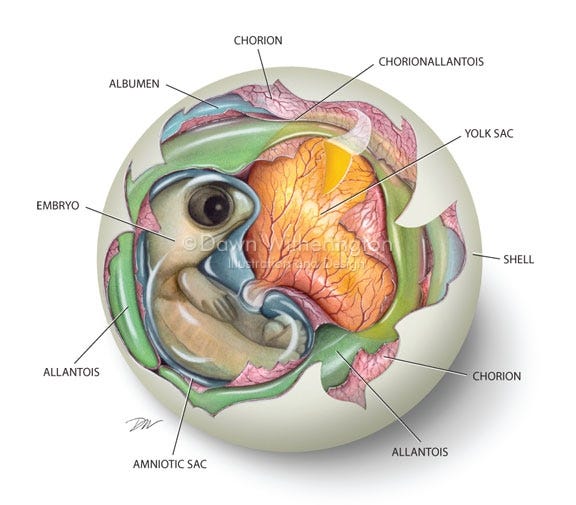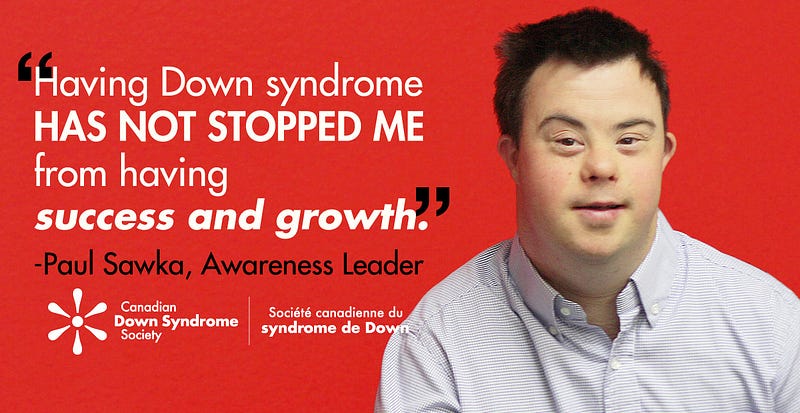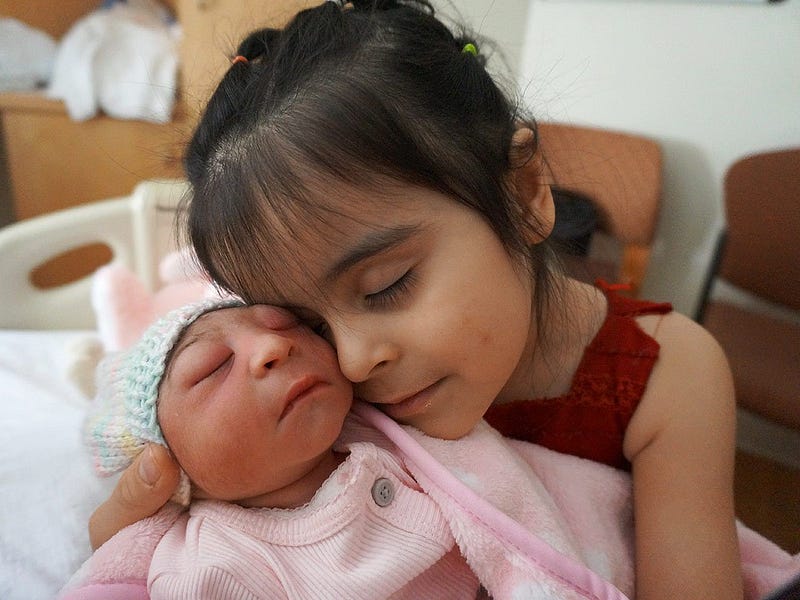#MarchForLife
#IStandWithPP
#DefundPlannedParenthood
#MyBodyMyChoice
These hashtags are filling up social media right now. Especially with the potential appointment of Neil Gorsuch (a very vocal pro-life activist) to the Supreme Court, the internet is full of the republicans rejoicing and the democrats dissenting.
I have been doing a lot of research, trying to understand both sides of the issue. I am very, very pro-life (or anti-abortion, if you like — the term doesn’t offend me), but I wanted to understand why so many people are pro-choice/pro-abortion. I then worked on writing my responses to them.
There are lots of assumptions and fudged facts on both sides, but with some digging the truth can come out. The other difficulty is that sometimes that answers have room for interpretation or opinion, such as to the question of when life begins. I have tried to be as factual and distant as I can as I respond to these different arguments, but I cannot help but be biased because I have a three-month-old son who is the light of my life (my husband calls him our little photon), and the idea of him being killed in the womb makes me cry without hesitation.
I invite comments, responses to my arguments, and clarifications if anything I wrote doesn’t make sense to you. References and additional links are provided at the end with corresponding numbers. This war of words is all over the internet, and maybe this article will help somebody think a little more about choosing life.
1. Fetuses aren’t alive until later in pregnancy, so early-term abortions aren’t killing anything.
→Miriam-Webster Dictionary’s definition of “life” is an “organismic state characterized by capacity for metabolism, growth, reaction to stimuli, and reproduction.” A baby in the womb exhibits all these qualities. From the moment of conception, the fertilized oocyte (egg) is metabolizing, giving it energy to grow, until it is a fetus and reacts to stimuli in its small uterus world, and begins its process of preparing to reproduce, which won’t be completed for another 10–16 years (adolescence).
2. Fetuses aren’t considered people until they are viable or born.
→Sea turtle eggs are protected by both federal and state laws. Any destruction to these embryos can result in high fines or even jail time! Yet, human embryos (what we call babies in the earliest stages of pregnancy) are legal to kill in awful ways. Here are illustrations of both sea turtle and human embryos:
Both are supported by an organ to feed them (placenta/yolk sac). Both are soft and vulnerable. Neither could survive outside their current environment. My question is: Why is a sea turtle a precious sea turtle at this stage, and a human is a disposable fetus?
3. A fetus’s right to life doesn’t mean it has the right to use a woman’s body; my body, my choice.
→The thing is, a fetus is not part of a mother’s body. It is no more part of her body than you are part of your car when you drive it. It is essential for your survival and protection as you travel at those speeds, but when you reach your destination you get out and leave the car as it was.
A common misconception is that the placenta connects the fetus directly to the mother. This is not exactly true; half of the placenta is made by the mother’s tissues, but the other half is made by the blastocyst (name for an early, early stage of baby development) and then connects to the half made by the mother. The placenta acts as a barrier as well as a carrier: Nutrients travel from the mother to the fetus, but the mother’s blood and the baby’s blood never mix. They are two completely separate beings with two separate bodies.
Pro-life activists aren’t trying to control your body; they are trying to protect the bodies of innocent babies.
4. Babies are difficult and expensive; abortion means less children born to parents that can’t handle them.
→People in life seek to get rich so they can buy nicer things, which are more expensive. If we’re assigning worth to things based on how expensive they are, then children are the most precious things in the world!
In all seriousness, human life is precious. The Founding Fathers of the United States said in the Declaration of Independence: “We hold these truths to be self-evident, that all men are created equal, that they are endowed by their Creator with certain unalienable Rights, that among these are Life, Liberty and the pursuit of Happiness.” The first unalienable right listed is that of life. Every fetus deserves life.
As for expenses that wear on families, there are so many government programs to help families that are struggling. There are also nonprofit programs and thrift shops to help. With those aids, children born into less than ideal circumstances have the chance to live and hopefully improve those circumstances for their children. In the worst case scenarios, adoption may prove to be a viable option for decreasing financial pressure of children while still respecting their right to life.
5. The adoption system is already too full and slow, so abortion is a more realistic and useful option.
→It’s true that the adoption system is messed up. It can cost so much money and take so long. It requires lawyers and agencies and an understanding of laws that I won’t even pretend to understand. However, abortion as an easier option means that a change to the adoption process will never happen. The fact that it is easier to kill a child than to adopt one is wrong. If we put as much effort into protesting adoption rights as we do abortion, I believe more children would live and would have the chance to be placed into loving homes.
6. Babies limit a woman’s ability to progress in her career.
→I have two responses to this argument. First: Being a stay-at-home-mom is a career. I don’t get vacations and evenings off like my husband — it is a 24/7 job that makes no money, but saves a ton of it. SAHMs also get to spend tons of time with their kids during the most developmentally vital years.
Second: You can have a career and a family. It takes work and expert juggling, but you can do it. If a career is important enough, women can make it work without needing to abort their child. Besides, if the career is lucrative enough to consider abortion, then odds are it makes enough money to pay for day care.
7. It’s just another form of birth control.
→I’m not going to enter the argument about whether birth control is moral or not. That is another conversation entirely. However, abortion is not birth control. The Miriam-Webster dictionary defines “contraception” as “deliberate prevention of conception or impregnation.” “Abortion” is defined as “the termination of a pregnancy after, accompanied by, resulting in, or closely followed by the death of the embryo or fetus.” Those terms are not synonymous, because “prevention” means before and “termination” means after. Going back to our earlier argument about embryos and fetuses being alive, “termination” means killing a living human. Birth control stops the sperm and egg from becoming one at all. Big difference.
8. Making abortion illegal doesn’t decrease the number of abortions, but instead just causes women to seek out unsafe abortions.
→Yes, that is true, but the laws that prohibit driving 100 mph on the freeway don’t seem to drastically decrease the number of people doing so. The laws are there to dissuade those on the edge from acting a certain way, to add a sense of morality to obeying the law, and to express consequences for disobeying. For example, those people who drive 100 mph on a 70 mph freeway will have a more disastrous crash if mishap were to occur than those going the speed limit. The law is there to help keep people safe. In the same way, the law to make abortion illegal would save the unborn from the abortions and the women from unsafe abortions, but if someone decides to do it on their own then the “crash” will be more disastrous.
9. Abortion saves women from the psychological damage caused by being refused an abortion.
→This argument is the one I know the least about. I am not well-versed in psychology, and the articles I read had very mixed messages. All I can say is this: An abortion is a huge, and very final, decision. There is no turning back once it’s done, and the consequences of ending a potential life are immeasurable. I feel that that should have some affect on the mental health of the woman receiving the abortion, but if the fetus is not seen as a human life I can understand why having the opportunity for freedom from that “burden” would be of greater harm than actually receiving the abortion. If we agree that fetuses are human, though, then I believe the psychological damage would be worse after having an abortion than being denied one.
10. Abortion is an effective means of population control.
→The world isn’t overpopulated. As technology and science progress we’ll be able to help the planet sustain even more people! Besides, we have a while before we even have to worry about sustainability. The problems of sustainability and distribution of resources may be solved by one of the fetuses that someone decides not to abort for the sake of population control.
11. Childbirth is much more dangerous than an abortion.
→Dangerous for who, exactly? The amount of women who die in childbirth is so much lower than the amount of children who die from abortions. It is a risk to get pregnant and have a baby (I know, because my type 1 diabetes caused an emergency c-section for me and a NICU stay for my baby), but it also brings about great potential to better the world with each child born. Each child aborted is a risk averted, and an infinite potential snuffed out.
12. Tax dollars don’t fund the abortions at Planned Parenthood.
→The taxes may not directly be put to use in funding abortions, but they are used in other ways that free up other money for the abortions. It’s the same as if your mom gave you $20 for groceries, but now you have an extra $20 to go to the movies. You may not be using the exact $20 bill your mother gave you, but that money freed up the money you used for the movie. In the same way, the government tax dollars go toward STI testing, birth control, or other preventative measures, freeing up lots of money to go toward abortions.
In fact, reports from former Planned Parenthood managers tell that abortion quotas are set and incentives given to reach them. This system of government funding everything but the abortions and the displaced money going to them instead creates a revenue from the abortions.
13. Abortion is most often used in cases of danger to the mother or baby, or in cases of rape.
→This reason is extremely overused. Less than 1% of abortions are used to save the mother’s life, and less than .5% are due to cases of rape or incest. As for the health of the baby, what does killing it accomplish? Most baby-health-related cases include early delivery or miscarriage, so abortion is not necessary. Abortion because the baby is sick just means there’s never any chance of recovery and healthy birth. The majority of abortions are because of convenience or economic reasons. This argument, while the idea is valid, is vastly exaggerated.
14. It saves parents from having to deal with children with severe disabilities such as anencephaly, down syndrome, etc.
→The percentage of children diagnosed with Trisomy 21, or Down Syndrome, who are aborted varies from 61–93% in the United States and Europe. That means more than half of these children don’t get the chance to grow, learn, or be loved. 95% of children with anencephaly (where the child is born without parts of the brain and skull) are aborted upon diagnoses. Yet there are so many stories of very successful people with Down Syndrome who change the lives of those around them, and of babies with anencephaly who only live a short while but are loved by their family forever.
The best things in life aren’t easy. The families of these children with Down Syndrome, anencephaly, and other severe disabilities are stronger and better for their struggles, and for the lives that, even for a short time, were part of theirs.
I have tried to remain logical and scientific throughout this article. I have included references and additional opinions to support my responses. Now, I am going to express my personal beliefs.
I am a Christian, and I believe that every single person is a child of God — me, you readers, the baby with anencephaly, the doctor who has performed hundreds of abortions, the mother who walks out of the clinic with a baby and the mother who leaves without one. Each and every child conceived deserves the chance to fulfill their divine potential as a son or daughter of God. Life may not be easy for them — disabilities, difficult family circumstances, adoption, or the foster care system — but at least they have a chance to take those hardships and grow from them.
Abortion takes the choices that belong to God — whether the baby lives or dies in the womb — and takes it upon ourselves. Humans are selfish and short-sighted, and it’s not always our fault, but that means that it should not be up to us to decide the fate of an innocent baby who cannot make the choice for itself.
It is our duty to protect the unborn. To be pro-life is to be pro-woman, pro-man, pro-human, and ultimately pro-choice, because you are standing up for the choices of those yet to be born.
References:
- https://www.merriam-webster.com/dictionary/life
- http://thecotas.com/2012/01/sea-turtle-nests-protected-by-state-and-federal-law/ ; http://abortionprocedures.com/ ; pictures from google images
- https://en.wikipedia.org/wiki/Placenta ; the car analogy is not mine, but I heard it on social media a long time ago and was not able to find the original source.
- http://www.welfareinfo.org/child/ ; http://www.ushistory.org/DECLARATION/document/
- http://www.adopt.org/ten-step-overview
- http://www.salary.com/stay-at-home-mom-infographic/;http://www.huffingtonpost.com/jamie-davis-smith/why-i-dont-regret-being-a-stay-at-home-mom_b_3849263.html ; https://www.theatlantic.com/sexes/archive/2013/02/dont-rule-out-having-children-because-you-want-to-have-a-career/273154/
- https://www.merriam-webster.com/dictionary/contraception ; https://www.merriam-webster.com/dictionary/abortion
- http://www.law.uchicago.edu/news/why-do-people-obey-law
- http://www.dailymail.co.uk/femail/article-1046582/Can-abortion-Six-women-different-views-.html
- http://www.nytimes.com/2013/09/14/opinion/overpopulation-is-not-the-problem.html
- http://abortionprocedures.com/ ; http://data.worldbank.org/indicator/SH.STA.MMRT ; http://www.lifenews.com/2013/04/05/1270-babies-born-alive-after-failed-abortions-in-the-united-states/
- http://www.dailywire.com/news/12425/how-planned-parenthood-can-spend-taxpayer-money-frank-camp (This is not an official source, but where I got the example I used. It has some good insights, though, so I recommend reading it anyway); http://liveaction.org/abortioncorporation/
- http://www.johnstonsarchive.net/policy/abortion/abreasons.html
- https://en.wikipedia.org/wiki/Down_syndrome#Abortion_rates ; http://healthresearchfunding.org/20-important-anencephaly-statistics/ ; http://www.ndss.org/DSWORKS/DSWORKS-Success-Stories/ ; http://www.anencephaly.info/e/stories.php ; pictures from Google images.




No comments:
Post a Comment